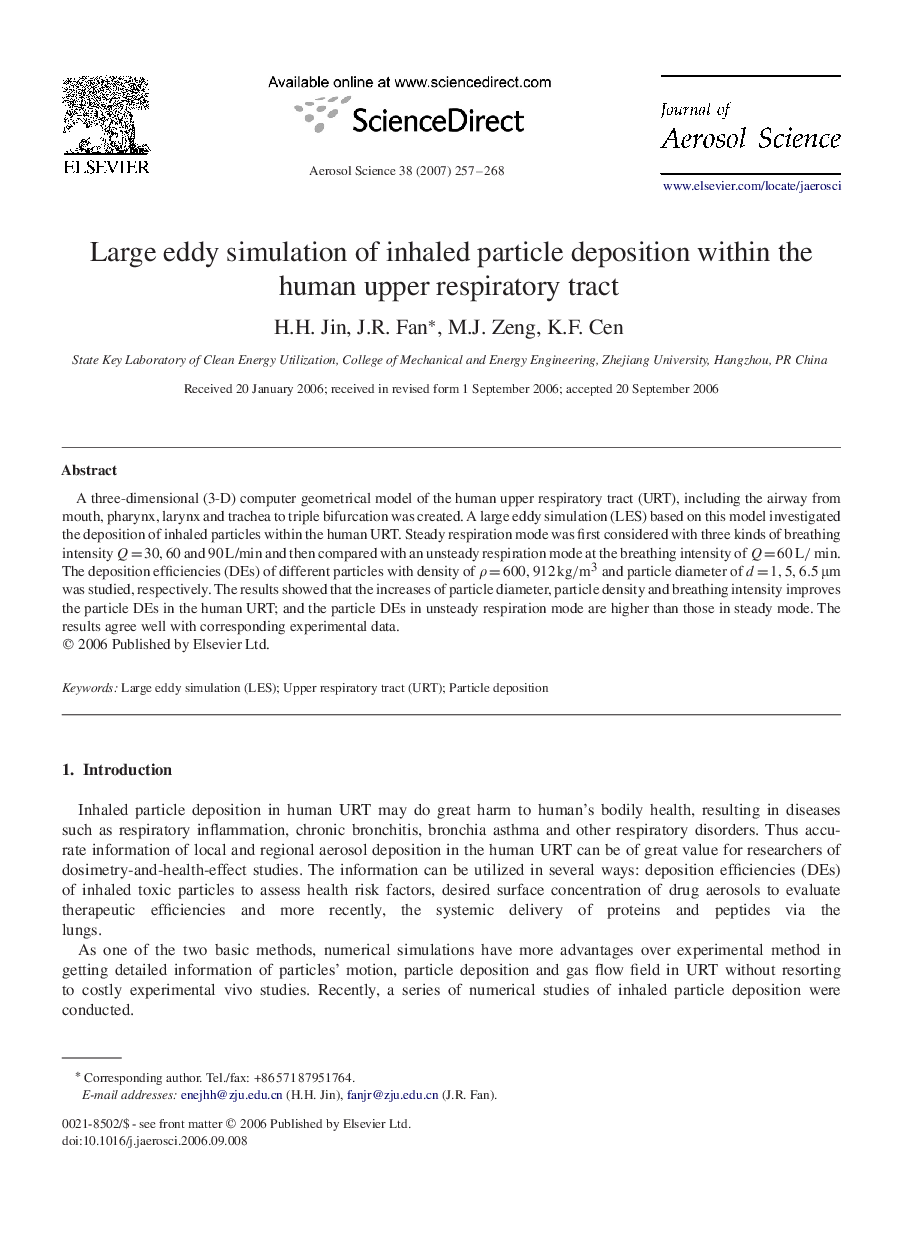| Article ID | Journal | Published Year | Pages | File Type |
|---|---|---|---|---|
| 4453222 | Journal of Aerosol Science | 2007 | 12 Pages |
A three-dimensional (3-D) computer geometrical model of the human upper respiratory tract (URT), including the airway from mouth, pharynx, larynx and trachea to triple bifurcation was created. A large eddy simulation (LES) based on this model investigated the deposition of inhaled particles within the human URT. Steady respiration mode was first considered with three kinds of breathing intensity Q=30Q=30, 60 and 90 L/min and then compared with an unsteady respiration mode at the breathing intensity of Q=60L/min. The deposition efficiencies (DEs) of different particles with density of ρ=600ρ=600, 912kg/m3 and particle diameter of d=1d=1, 5, 6.5μm was studied, respectively. The results showed that the increases of particle diameter, particle density and breathing intensity improves the particle DEs in the human URT; and the particle DEs in unsteady respiration mode are higher than those in steady mode. The results agree well with corresponding experimental data.
